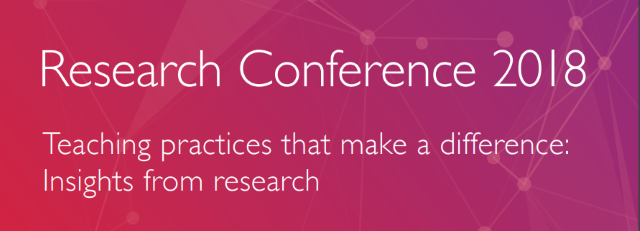
Monday 13 August 2018
Start Date
13-8-2018 1:30 PM
End Date
13-8-2018 2:30 PM
Subjects
Early childhood education, Academic achievement, Quality assessment, Child development, Disadvantaged, Teacher effectiveness, Student teacher relationship, Measures, Equality (Social)
Abstract
There is compelling evidence that high-quality early childhood education and care (ECEC) programs can act to narrow achievement gaps attributed to social inequality. This evidence is typically observed in model programs, designed by experts and offered to vulnerable families outside the market. In everyday settings, where market forces may price families out of certain programs or poor local availability may preclude attendance, ECEC programs do not appear to deliver these significant gains or close these gaps. There is a need to continually improve quality in all ECEC settings to deliver on the potential of early education. It is unclear, however, how quality improvement can be achieved in way that will deliver the best start in life for all. This paper looks at what early childhood interaction quality looks like right now in Australian services and internationally. Specifically, what educator practices are related to children’s learning and development? This paper contributes to the knowledge about quality improvement in two ways. The first is related to how educators can leverage research into pedagogical quality to collect data and improve their own practice. The second relates to the organisation of the ECEC system and how it must be arranged to ensure all children get equal access to high-quality ECEC experiences. Together, these two contributions have the potential to increase the effect ECEC programs have on children’s learning and development outcomes and to deliver on the promise of narrowing achievement gaps and breaking the link. This paper explores the challenge of lifting the quality of Australian ECEC programs, so that the system can deliver on the promise of reducing achievement gaps related to disadvantage. Specifically, this paper brings together the latest research to ask how large-scale psychometric analysis can be used at the classroom level for educators, or communities of educators, to: (1) collect their own data about their practice, (2) visualise it on a continuum of pedagogical quality, and (3) use this information to demonstrate growth in quality.
Recommended Citation
Cloney, D. (2018, August 13). Using measures of quality to improve the learning outcomes of all children [Paper presentation]. Research Conference 2018 - Teaching practices that make a difference: Insights from research. https://research.acer.edu.au/research_conference/RC2018/13august/11
Copyright Statement
Copyright Australian Council for Educational Research 2018
Place of Publication
Melbourne, Australia
Publisher
Australian Council for Educational Research (ACER)
ISBN
9781742865119
Geographic Subject
New South Wales
Included in
Early Childhood Education Commons, Educational Assessment, Evaluation, and Research Commons
Using measures of quality to improve the learning outcomes of all children
There is compelling evidence that high-quality early childhood education and care (ECEC) programs can act to narrow achievement gaps attributed to social inequality. This evidence is typically observed in model programs, designed by experts and offered to vulnerable families outside the market. In everyday settings, where market forces may price families out of certain programs or poor local availability may preclude attendance, ECEC programs do not appear to deliver these significant gains or close these gaps. There is a need to continually improve quality in all ECEC settings to deliver on the potential of early education. It is unclear, however, how quality improvement can be achieved in way that will deliver the best start in life for all. This paper looks at what early childhood interaction quality looks like right now in Australian services and internationally. Specifically, what educator practices are related to children’s learning and development? This paper contributes to the knowledge about quality improvement in two ways. The first is related to how educators can leverage research into pedagogical quality to collect data and improve their own practice. The second relates to the organisation of the ECEC system and how it must be arranged to ensure all children get equal access to high-quality ECEC experiences. Together, these two contributions have the potential to increase the effect ECEC programs have on children’s learning and development outcomes and to deliver on the promise of narrowing achievement gaps and breaking the link. This paper explores the challenge of lifting the quality of Australian ECEC programs, so that the system can deliver on the promise of reducing achievement gaps related to disadvantage. Specifically, this paper brings together the latest research to ask how large-scale psychometric analysis can be used at the classroom level for educators, or communities of educators, to: (1) collect their own data about their practice, (2) visualise it on a continuum of pedagogical quality, and (3) use this information to demonstrate growth in quality.


Comments
Session 4P